Shooting the Fausti Dea Duetto in the Low-Country Haven of Bray’s Island Plantation
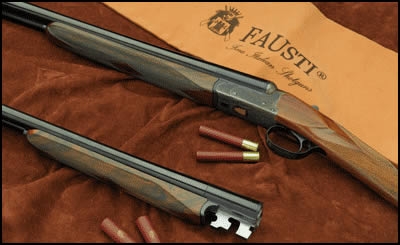
The timing was perfect…
Fausti USA offered us its lovely Dea Duetto side by side combo just as we wrapped up planning a road trip to the exclusive Bray’s Island Plantation in Sheldon, South Carolina.
The occasion was the invitation-only Bray’s Island Outdoor and Shooting Exposition, held this year April 16th through the 18th. As a rule, Bray’s Island Plantation is restricted to the 325 property owners and their guests who enjoy sporting clays, upland and waterfowl shooting, skeet, trap, equestrian programs, golf, fishing, tennis… a heavenly Low Country sporting paradise embraced by 350,000 acres of federally protected estuarine marshes. The road into Bray’s Island Plantation says it all: the atmosphere and beauty of the ancient oaks draped with Spanish moss that lead to the magnificent gates of the 5,500-acre community.
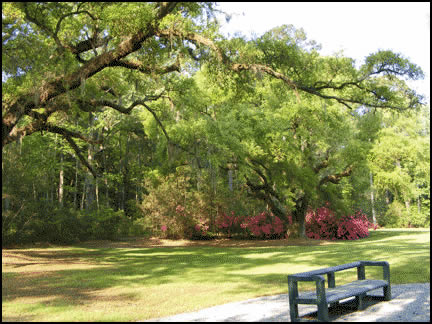
The country sporting life as distinguished by the event served as a fitting venue to the classic style of the Fausti Dea Duetto.
Shotgun exhibitors at the exhibition included Griffin & Howe, Holland & Holland, Connecticut Shotgun, FAMARS di Abbiatico & Salvinelli, and Charles Boswell Gunmaker. These top-notch purveyors were complemented by accessories on display from JW Hulme, Ermilio Clothier, London Trading Company, Russell Mocassins and others.
A pleasant surprise was the number of women shooting on the Holland & Holland designed sporting clays course – a sure sign that the Dea Duetto, which roughly translates into “twin goddesses,” and sold by the three Fausti sisters, was in its element at the Bray’s Island Plantation.
The twin goddesses in this case are the 28-gauge and .410 barrel sets that fit into the diminutive side by side. The 28-gauge frame is barely 1¼ inches wide and coupled with a straight English stock of about 4¾ inches in circumference the gun feels extremely nimble. Depending on the barrel, the Dea Duetto will weigh approximately 5 pounds, making it a joy to carry in the field loaded with 2¾-inch shells.

Despite its petite proportions, the 143/8 -inch length of pull as engineered into the straight stock and elegant receiver enabled an easy and dependable gun mount. When I shouldered the gun, all I could see were fleeting woodcocks at the end of the barrel – well at least I could day dream. Partial credit to the authoritative mount should be given to the drop at heel of 21/4 inches and a drop at comb of 17/8 inches.
The vertical seam that joined the receiver and stock clearly distinguished the Dea Duetto as a boxlock. However, the case coloring and delicate floral engraving that extends to the top lever and below to the trigger guard and long, elegant tang conveyed the timeless sensibility of a beloved English sidelock.
A choice touch was the Fausti family crest in gold, ensconced in a floral swirl on the bottom of the receiver. Additional gold particulars included the single, selective trigger and the appellation “Dea Duetto” on the broad trigger guard.
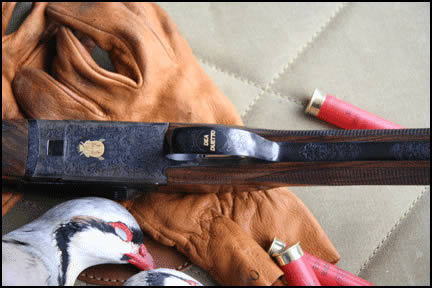
The Faustis ensured reliability of the Dea Duetto through the venerable Anson & Deeley action, which has persisted since John Deeley, along with William Anson, developed it and awarded the patent in 1873 to the prominent Birmingham gun maker, Westley Richards.
For lockup, the Fausti Dea Duetto employs the rugged double-under-lump system with a lug on the forward lump that continues along through the base of the receiver body. Move the top lever to the right after a couple of shots, and when you break open the barrels the spent hulls are vigorously ejected.
The blued barrels ran 28 inches in length, perfect from our perspective for quality upland shooting. The solid, raised rib was adorned with a single brass bead on the muzzle. Forcing cones afford consistent and tight patterns while controlling recoil.
A premium feature was the matching Prince of Wales forends on the barrels – one for each set of barrels. Some gun manufacturers will only provide a single forend on combo sets, but Fausti’s approach virtually guarantees a reliable, secure fit. The company seemed to make every effort to match the AAA, oil-finished walnut in the stock and forends. The forends were easily released by pushing the Anson-style button on the nose.
The checkering, at 24-lines-per-inch in a bordered double-diamond pattern, enhanced the attractive figuring of the walnut. I’m a chump for wood butt plates and the one on the Dea Duetto was particularly handsome with the case-colored screws and Fausti family crest. The 28-gauge barrels are accompanied by five interchangeable chokes. The constrictions for the .410 set are fixed at modified and full – designating them for the most ardent wing shooters.
You would be hard pressed to find a more attractive upland package at the retail price of $4,999.
Overall, the Fausti Dea Duetto made for a wonderful accoutrement at the Bray’s Island Outdoor and Shooting Exposition. It was the right gun, at the right time, at the right place. Although the Dea Duetto was obviously new, it embodied a historic element that most certainly celebrated the love of hunting engrained in the South’s merchant aristocracy.
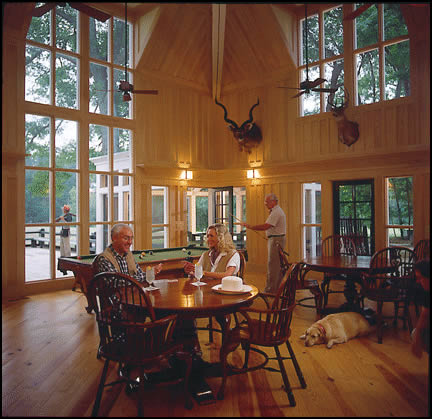
Brays Island was discovered in 1663 by William Hilton. It is named after the Indian trader William Bray, who along with his family died in 1715 at the hands of Yemassee Indians. Through the centuries Brays Island continued a working plantation, producing cotton, indigo and rice.
In the late 1980s, then-owner Sumner Pingree transformed the property into a sporting residential community. In collaboration with planner Robert Marvin, the two visionaries adopted a radical approach to its development by created 325 non-contiguous homesites in a circular arrangement. The goal was to guarantee that the abundance of property remained, as much as possible, in its natural state.
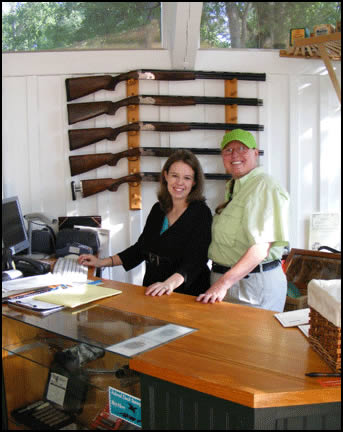
In particular, the Bray’s Island Gun Club furnishes world-class facilities for clay shooting including sporting clays, skeet, trap, five-stand and bunker trap. The ongoing interest in clays shooting at Bray’s Island shows in the current expansion of the sporting clays course from 12 to 15 stations.
Its pro shop is fully stocked with shotguns, clothing, and equipment. The Gun Club also handles gun rental, storage and cleaning. Jim Arnold, an NSCA Level III instructor, gives lessons through the club on the spectacular sporting clays course.
The hunting season is open for quail, Hungarian partridge, chukar, pheasant, dove, turkey, duck and deer.
Come this fall, we would love to get invited back to the Bray’s Island Plantation to put that Fausti Dea Duetto to serious use.
Deborah McKown is the Editor of Shotgun Life. Please send your comments and questions to letters@shotgunlife.com.
Useful resources:
Deborah McKown is the Editor of Shotgun Life. Please send your comments and questions to letters@shotgunlife.com.


Comments